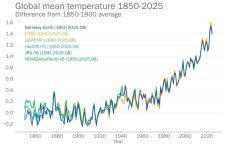Snow and rain and cooler temperatures helped ease suffering in drought-stricken areas of the United States over the last week, though some areas saw conditions grow worse, according to a climatology report issued Thursday.
Monster storm Sandy, which devastated the eastern United States with heavy rains and high winds, had little to no impact on the driest areas of the U.S. Heartland. Indeed, the worst level of drought — "exceptional" — expanded in the U.S. South, which includes Oklahoma, Texas, and Arkansas.
Roughly 60.16 per cent of the contiguous United States was suffering from at least "moderate" drought as of Oct. 30, down from 61.79 per cent a week earlier, according to Thursday’s Drought Monitor, a weekly compilation of data gathered by federal and academic scientists.
Read Also

U.S. livestock: Cattle futures slow descent
Chicago cattle futures fell on Thursday but to a lesser degree compared to Wednesday’s limit-down drop. Most-active December live cattle…
The portion of the United States under "exceptional" drought — the most dire classification — ticked up to 5.89 per cent from 5.84 per cent and was mostly in western Kansas and Nebraska.
In the High Plains, which include Kansas, Nebraska and the Dakotas, severe or worse drought levels covered 83.87 per cent of the region, improved from 84.90 per cent the prior week. An estimated 27.44 per cent of the region was still in the worst level of drought, unchanged from a week earlier.
Nebraska is the worst-hit state in the country, with fully 77.58 per cent of the state classified in exceptional drought, unchanged from a week earlier. Winter wheat farmers who have planted or are wrapping up planting their new crop will need significant rainfall and/or snow to provide enough moisture to grow a healthy crop.
In Kansas, the largest hard red winter wheat producing state, "extreme" drought, the second-worst level, held steady at 77.80 per cent of the state, while the worst level held steady at 39.68 per cent of the state.
Areas that saw good improvement over the last week included Illinois, Missouri, Minnesota and Iowa, due to wide-spread rains.
Carey Gillam reports for Reuters in Kansas City














